If you’re an RV owner, sooner or later you’ll have to dump your waste tanks. This can be a daunting task if you’ve never done it before, but with this comprehensive guide, it’s easy! We’ll answer all of your questions, including what kind of tanks your RV has, how to find the right dumping station, and more. So read on!
Table of Contents
Types of RV Tanks
There are three types of tanks in RVs: black water, gray water, and fresh water. Each type of tank has a different purpose.
- Black water tanks hold the sewage from the toilet.
- Gray water tanks store waste water from showers and sinks.
- Freshwater tanks keep potable drinking water safe and clean.
It’s important to know which kind of tank you’re dumping because each type of waste has different disposal rules. For example, you should never dump gray or black water into a storm drain because it can contaminate groundwater. There are also different disposal fees for each type of waste so you’ll want to make sure you’re using the right pump for the job. [1]
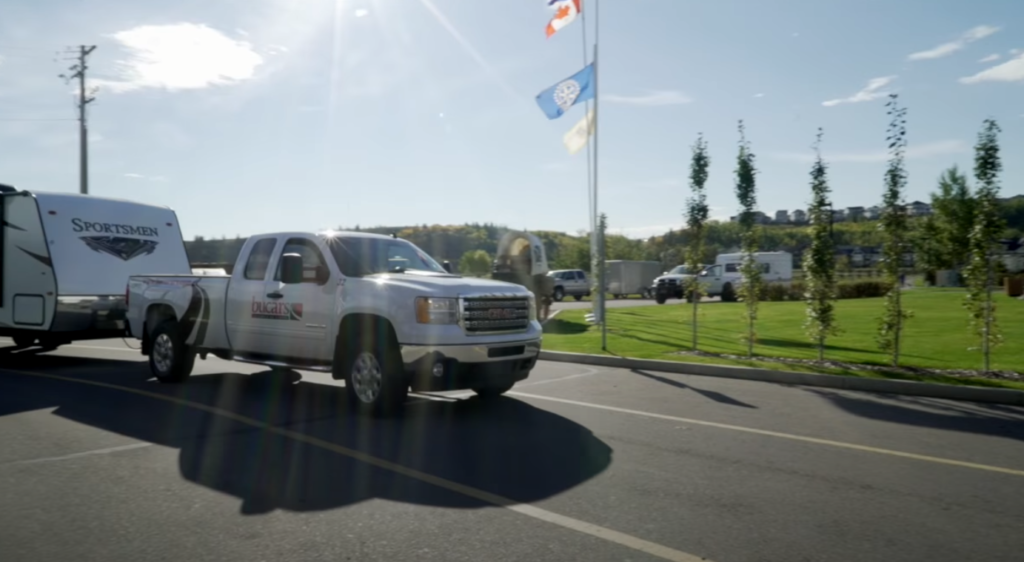
How to Empty the Tanks and What to Buy at the RV Parts Store
The first thing you’ll need to do is locate the black water tank (the one that contains human waste) and the gray water tank (the one that contains wastewater from showers, sinks, and washing dishes). The black water tank is usually located towards the front of the RV, while the gray water tank is usually located towards the back. Once you’ve located both tanks, you’ll need to open the valves to empty them.
To do this, you’ll need a sewer hose (available at any RV parts store) and a way to connect it to the RV’s sewage system. The most common way to do this is with a sewer adapter, which will fit onto the end of the sewer hose and has a threaded connection that will screw into the RV’s sewage outlet. [2]
Once the adapter is in place, simply open both valves and allow the waste to flow out into an approved dump site. Be sure to close both valves when finished so that no sewage backs up into the RV.
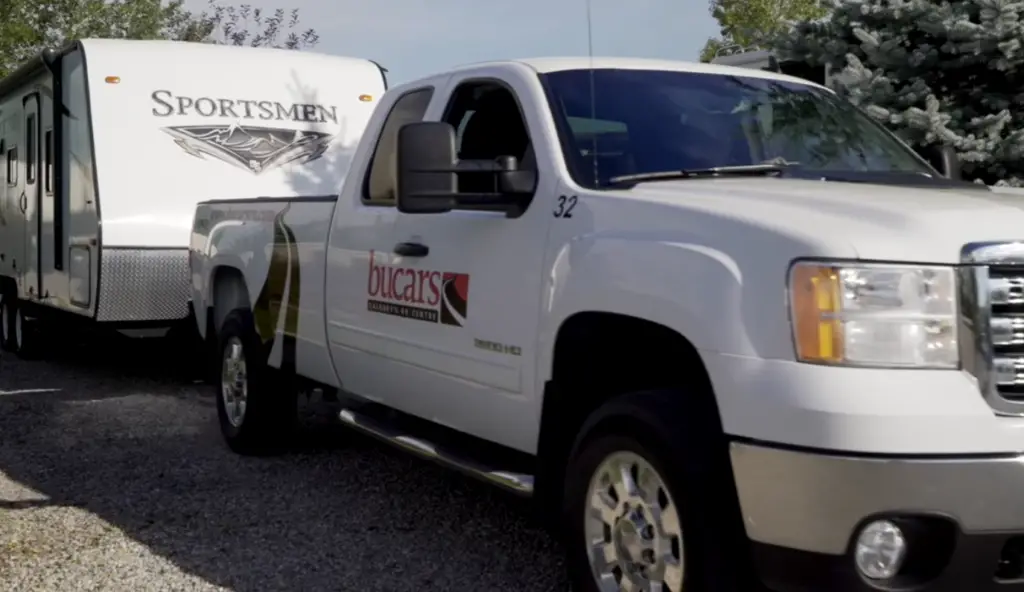
Cleaning Your Tanks and Other RV Maintenance
Part of that maintenance includes dumping your waste tanks on a regular basis. Here is a comprehensive guide to help you dump your waste properly.
The first step is to make sure you have all the supplies you need. This includes gloves, rags, dish soap, and a hose. You will also need access to water and a place to dump the waste. Once you have everything, it’s time to get started.
If you have a black tank, you will need to clean it out first before dumping it. To do this, add water and dish soap to the tank and then agitate it with a brush or other tool until the water is sudsy. Then, flush the tank with clean water several times to rinse it out.
Once the black tank is clean, you can move on to the gray tank. Again, add water and dish soap and agitate it until the water is sudsy. Flush the tank several times with clean water to rinse it out before moving on to dumping.
If you have a holding tank, you will need to dump it every few days or as needed. To do this, connect a hose to the outlet valve and open it up. Let the waste flow into an approved dump site until the tank is empty. Once it’s empty, close the valve and disconnect the hose.
Dumping your waste tanks may not be the most glamorous part of owning an RV, but it’s important to do it regularly. By following these steps, you can make sure that your tanks are properly cleaned and maintained.
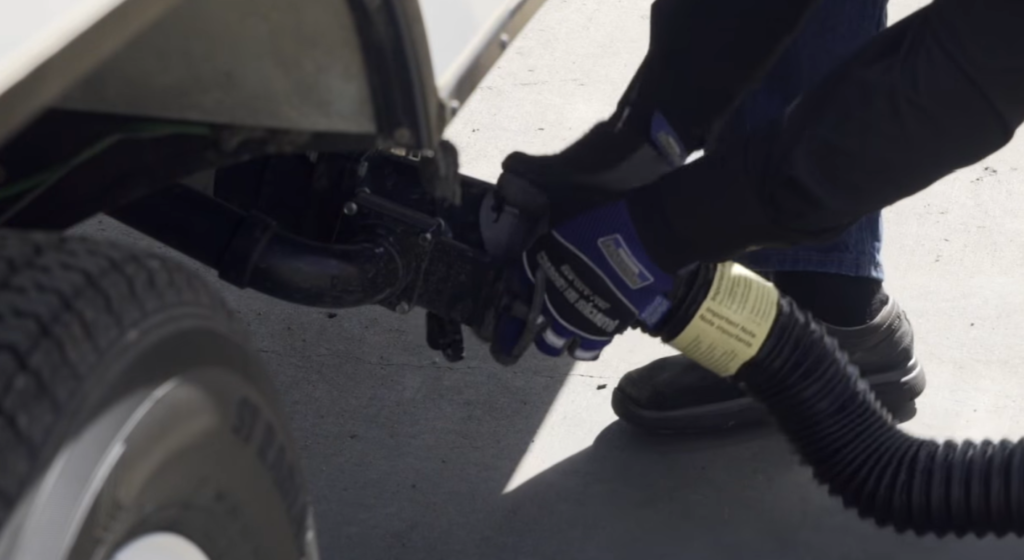
Finding Honey Wagon RV Service
The easiest way to find a reputable honey wagon service is through online research or word-of-mouth. Once you’ve found a few companies, give them a call and ask about their rates, services, and availability.
Most honey wagon services will charge by gallon (usually around $60 per month), so it’s important to know how much waste your RV produces. A good rule of thumb is that each person in your RV will generate about a gallon of waste per day.
If you have a larger RV or live in an area with limited resources, you may need to find a company that offers septic tank pumping services. This can be more expensive, but it’s worth it if you can’t find a reliable honey wagon service.
Once you’ve found a reputable company, make sure to ask about their policies and procedures. You’ll want to know how often they pump the tanks, what kind of maintenance they perform, and if there are any additional fees.
Most important thing is to find a company that you can trust. With so many choices out there, it can be hard to know who to choose. But if you take your time and do your research, you’ll be able to find a honey wagon service that meets all of your needs.
How Do You Find an RV Dump Station?
There are several locations where you can obtain an RV dump station.
One way is to look for signs that say “RV Dump” or “Dump Station” as you’re driving. These are usually located near gas stations, campgrounds, and RV parks.
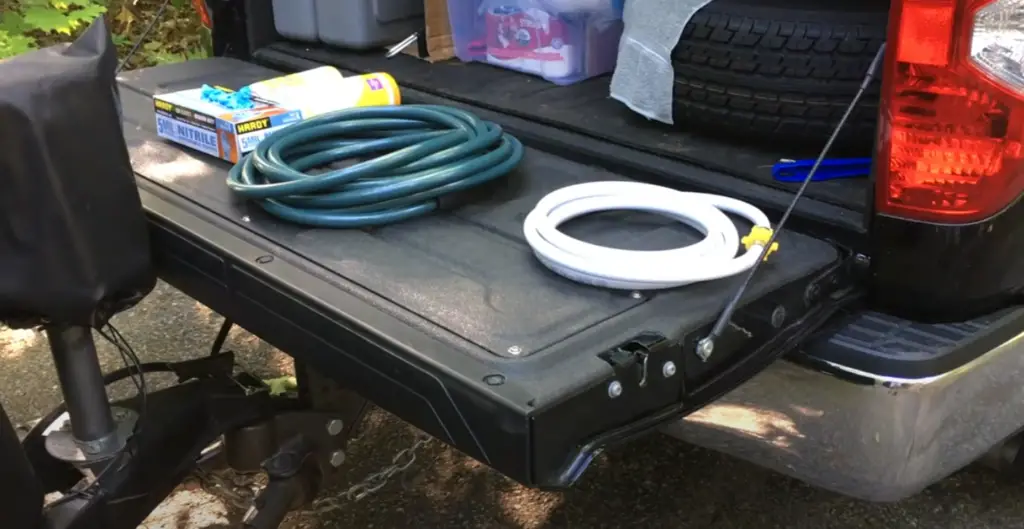
Another way is to use one of the many apps or websites that are available. AllStays (allstays.com) and Sanidumps (sanidumps.com) are two popular options. Both of these websites have searchable databases of RV dump stations across the United States. [3]
How Do You Dump RV Waste?
The process of dumping RV waste is actually simple and straightforward. All you need is a sewage hose and a dump station, and you’re good to go! Follow these steps to achieve your goal:
- Step #0: Ensure your RV is properly connected to the dump station. This means that your sewage hose should be securely connected to both your RV’s black water tank outlet and the dump station’s inlet. If everything is properly connected, you’re ready to move on to the next step.
- Step #01: Open up the valve on the black water tank. This will allow the contents of the tank to flow out through the sewage hose and into the dump station.
- Step #02: Once the tank is empty, close the valve and disconnect the sewage hose from both the RV and the dump station. Be sure to properly store the hose away so that it doesn’t come into contact with any other surfaces.
And that’s all there is to it! Dumping your RV waste is a simple process that just takes a few minutes to complete.
Where to Dump RV Waste
This is the easiest and most convenient option, as all you have to do is drive up and connect your RV to the sewer connection.
Another option is to use a public dump station. These are usually located at rest stops or gas stations. They may not be as convenient, but they’re usually free to use.
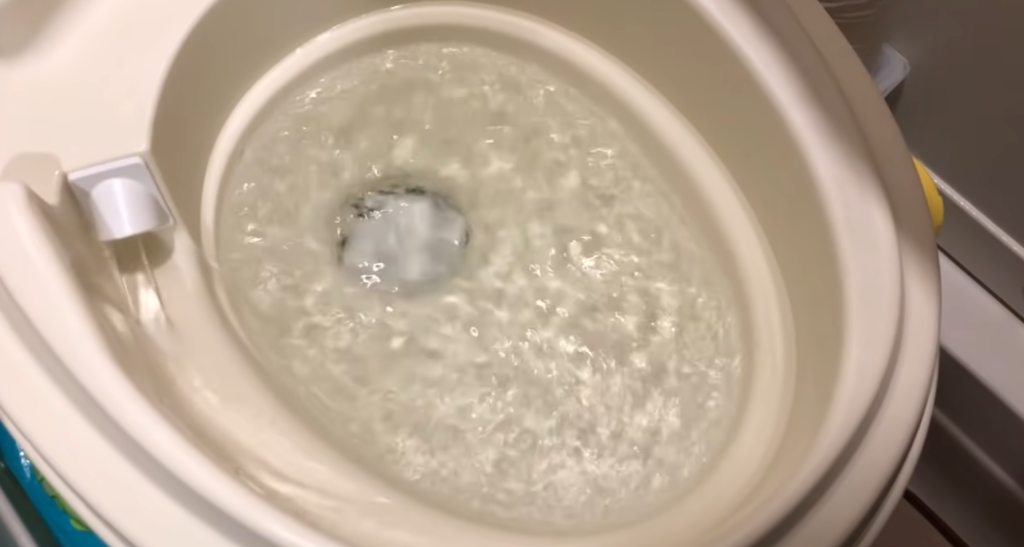
Finally, you can always dump your waste at a septic tank. This is probably the least convenient option, but it’s an option if you’re boondocking or there are no other options available.
RV Parks and Campgrounds
If you’re staying at an RV park or campground that has hookups, then dumping your waste is easy. Just hook up your RV to the sewer connection and open the black water valve. The waste will flow out of your RV and into the sewer system.
Parks and campgrounds typically have a dump station that you can use for a small fee. This is usually located near the restrooms or showers.
Gas Stations
If you’re on the road and need to dump your waste, you can always find a public dump station.
Just drive up to the dump station and connect your RV. Then open the black water valve and let the waste flow out.
Most public dump stations will have a small fee, but it’s usually less than $20. And it’s still cheaper than having to pay for a full hookup at an RV park!
Some states also have free dumping stations that you can use. You can find these by doing a quick Google search or checking with your state’s parks department.
Here’s a list of free dumping stations in each state:
- Alabama: Chewacla St. Park, DeSoto St. Park, Gulf St. Park, Oak Mountain St. Park
- Arizona: Catalina St. Park, Dead Horse Ranch St. Park, Fool Hollow Lake Recreation Area, Slide Rock St. Park
- California: Donner Memorial St. Park, Samuel P. Taylor St. Park
- Colorado: Staunton St. Park
- Florida: Anastasia St. Parks, Fort de Soto County Park, Honeymoon Island St. Parks, Myakka River St. Parks
- Georgia: Crooked River St. Parks and Lodge, Fort Mountain St. Parks and Historic Site
- Hawaii: Haleakala National Park, Hawaii Volcanoes National Park
- Idaho: Coeur d’Alene Lake St. Park, Farragut St. Park, Priest Lake St. Park
- Illinois: Chain O’Lakes St. Park, Starved Rock St. Park
- Indiana: Brown County St. Park, Turkey Run St. Parks
- Iowa: Backbone St. Parks and Preserve, Ledges St. Parks
- Kansas: Elk City St. Parks and Wildlife Area, Meade St. Parks
- Kentucky: Big Bone Lick St. Historic Site, General Butler St. Resort Parks
- Louisiana: Fontainebleau St. Park, Palmetto Island St. Park
- Maine: Cobscook Bay St. Park
- Maryland: Assateague Island National Seashore, Patapsco Valley St. Park
- Massachusetts: Cape Cod National Seashore, Myles Standish St. Forest
- Michigan: Mackinac Island St. Park, Porcupine Mountains Wilderness St. Park
- Minnesota: Gooseberry Falls St. Park, Itasca St. Park
- Mississippi: John C. Stennis Space Center, Tishomingo St. Parks and Wildlife Management Area
- Missouri: Elephant Rocks St. Parks, Ha Ha Tonka St. Parks
- Montana: Bighorn Canyon National Recreation Area, Glacier National Park
- Nebraska: Fort Robinson St. Parks and Recreation Area
- Nevada: Lake Mead National Recreation Area, Valley of Fire State Park
- New Hampshire: Franconia Notch St. Park, White Mountain National Forest
- New Jersey: High Point St. Park, Wharton St. Forest
- New Mexico: Bandelier National Monument, Carlsbad Caverns National Park
- New York: AdirondackStatParks.com, Letchworth St. Parks
- North Carolina: Great Smoky Mountains National Park, Mount Mitchell St. Park
- North Dakota: Theodore Roosevelt National Park, Turtle River St. Parks
- Ohio: Hocking Hills St. Parks and Nature Preserves, Wayne National Forest
- Oklahoma: Keystone Lake St. Parks and Wildlife Management Areas, Robbers Cave St. Parks
RV Dealerships
If you’re having trouble finding a dump station, you can also try an RV dealership or service center.
These places usually have private dump stations that they use for their customers. So if you’re in a pinch, they may be able to help you out.
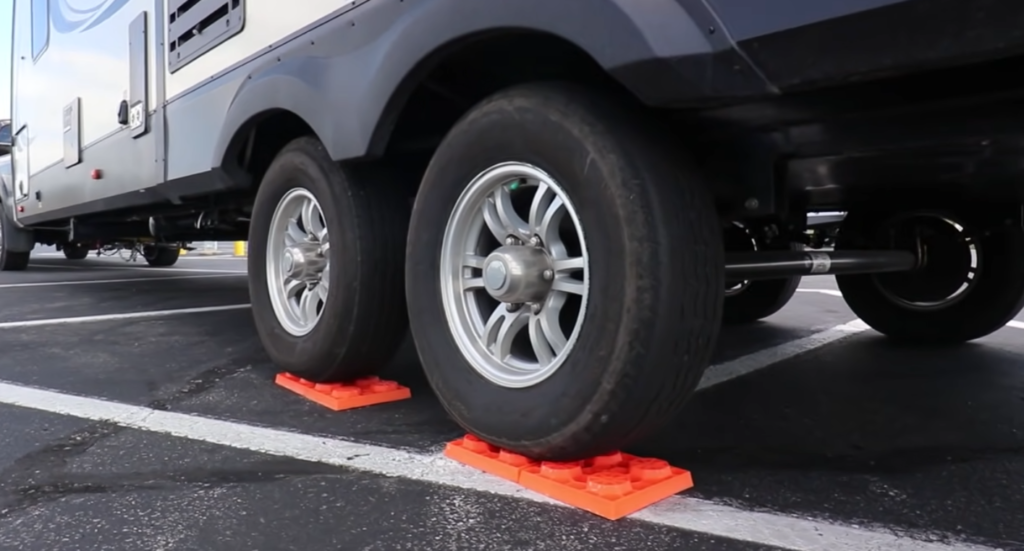
Of course, they’ll probably charge you a fee for using their facility. But it’s still cheaper than paying for a full hookup at an RV park!
Just give them a call ahead of time and ask if they allow non-customers to use their dump station. They should be able to tell you what the fee is and how to access the station.
National Parks
Another option for dumping your RV waste is at a national park.
Most national parks have dump stations that are available for use by the general public. And since they’re run by the government, they’re usually free of charge!
Of course, you’ll need to check with the specific park that you’re visiting to see if they have a dump station. But it’s definitely worth looking into if you’re planning on spending time in a national park.
Sporting Goods Stores
You may not have thought of this one, but some sporting goods stores also have RV dump stations.
This is because many of them sell RVs and they need somewhere for their customers to dump their waste. So if you’re near a sporting goods store, it’s worth giving them a call to see if they allow the public to use their dump station.
Wastewater Treatment Plants
This one is a bit of a long shot, but you may be able to find a dump station at a local wastewater treatment plant.
Of course, you’ll need to call ahead and ask if this is an option. But it’s definitely worth a try!
Marinas
If you’re staying at a marina, they will likely have a dump station on site that you can use. Most marinas require that you be a guest to use their facilities, but some may allow non-guests to use the dump station for a fee.
Some marinas may have additional restrictions, such as only allowing dumping during daylight hours or on certain days of the week.
Most people who own RVs know that one of the least glamorous aspects of the lifestyle is dumping the holding tanks. But it’s a necessary evil if you want to continue enjoying your time on the road.
Fortunately, there are plenty of options for dumping your waste, whether you’re at a campground, RV park, or even a marina.
Home Septic Tanks
Home septic tanks are often the preferred method for dumping RV waste. They are less expensive than public dump stations and can be found in most residential areas. The only downside is that they require more maintenance than other methods.
To use a home septic tank, you will need to have a clean-out valve installed on your RV. This will allow you to connect a hose from your RV to the septic tank. Once the hose is connected, open the clean-out valve and let the water run into the tank. Be sure to close the valve when finished.
It is important to note that you should never put anything other than water down your home septic tank.? This includes soaps, chemicals, or anything else that could damage the system.
Recycling Centers
Most recycling centers will accept RV waste, but there are a few things you need to know before taking it there. First, call ahead and make sure they accept RVs. Second, find out what their hours are and when the best time to come is. Third, ask what materials they recycle so you can sort your waste accordingly. Lastly, some recycling centers may charge a fee for dumping RV waste, so be sure to ask about that as well.
Assuming everything goes smoothly at the recycling center, all you need to do is back your RV up to the dumpster and start unloading. Be sure to follow any specific instructions the recycling center has given you, such as sorting certain materials into different bins. Once you’re finished, simply drive away and you’re done!
Of course, recycling is always the best option when it comes to disposing of waste. However, sometimes it’s not possible or convenient to recycle certain materials. In those cases, you can either dispose of them in the trash or find another way to get rid of them.
City or State Dump Stations
These are usually located near campgrounds, RV parks, or gas stations. The good thing about these dump stations is that they’re typically free to use. However, the bad news is that they can get pretty crowded during the peak season.
To find a city or state dump station, you can check out this website. Just enter your location and it will give you a list of nearby dump stations.
If you’re planning on using a city or state dump station, make sure to call ahead to see if there are any restrictions in place (e.g., length of stay). You should also bring along some quarters in case there’s a fee for using the pump.
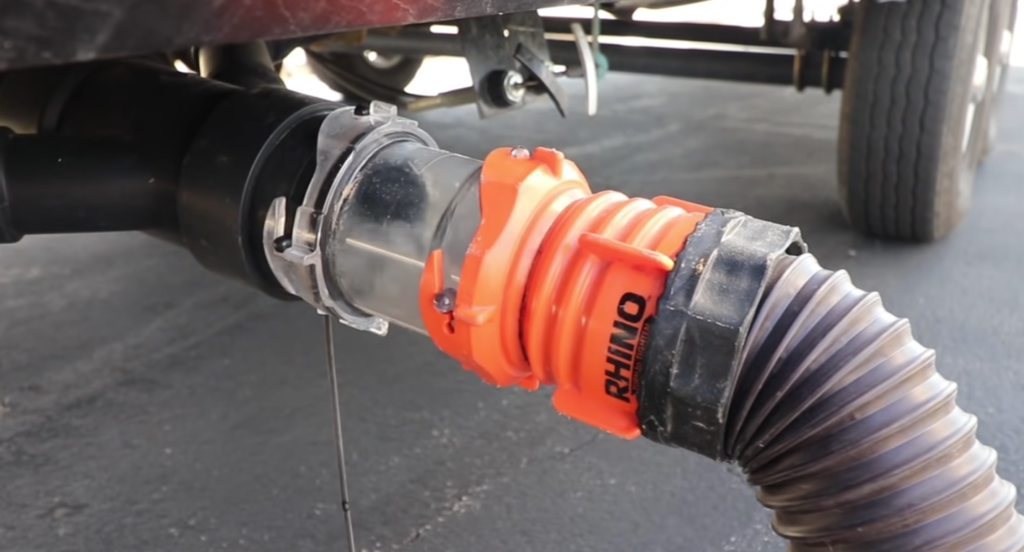
Finally, always remember to practice Leave No Trace principles when using a dump station. This means packing out everything that you bring in, including your sewage hose and any other trash. [4]
And that’s it! Dumping your waste water is a pretty easy process once you get the hang of it. Just make sure to do your research beforehand and always practice proper etiquette while on the road.
FAQ
How do I empty my RV black tank?
You’ll need to attach the hose to your RV’s sewage outlet, turn on the water, and let it run through the hose until the tank is empty. You can then disconnect the hose and flush out any remaining waste with clean water.
If you don’t have a sewer hose, you can also use a portable waste tank. These tanks are designed to be emptied into an existing sewer system, so you’ll need to find a dump station that has this type of connection. Once the tank is full, you can simply detach it from your RV and take it to the dump station to be emptied.
Alternatively, if you’re boondocking or dry camping, you can use a toilet to empty your black tank. This method is a bit more labor-intensive, but it’s doable in a pinch. Simply flush the toilet until the water in the bowl is clear, then disconnect the hose from the holding tank and let it drain into a portable waste tank or other containers. [5]
Finally, if you’re really in a bind, you can always just dump your black tank directly onto the ground. This should only be done as a last resort, as it’s not very environmentally friendly. If you do choose this method, be sure to dig a hole first and make sure that no one will step in it!
How is waste removed from an RV?
RV waste is removed using a process called “rinsing.” Rinsing involves flushing the holding tanks with clean water to remove any solid waste material. This is typically done using a hose connected to a water source, such as a spigot or faucet.
Once the rinsing step is complete, the effluent (waste water) is then discharged through an outlet valve. The effluent is typically discharged into a sewer system, although some RVs have self-contained systems that allow for discharge into septic systems or other appropriate locations. [6]
How often should you dump an RV?
This is a difficult question to answer as it really depends on how much you use your RV and how many people are using it. However, as a general rule of thumb, you should aim to dump your RV once every two to three weeks.
If you find that you are dumping your RV more frequently than this, then there are a few things that you can do in order to cut down on the amount of waste that you are producing. One option is to invest in a gray water tank which will allow you to store all of the dirty water from your sinks and showers until you are able to dispose of it properly. Another option is to only flush your toilet when absolutely necessary – this may seem gross but it can make a big difference!
Of course, the best way to reduce the amount of waste that you produce is to simply use your RV less. If you only take it out for weekends or short trips, then you will obviously have to dump it less often than if you were living in it full-time.
How do you empty a portable RV waste tank?
The best way to empty a portable RV waste tank is by using a macerator pump. This type of pump will grind up the waste so that it can be easily pumped out through a small hose. You can then use this hose to empty the tank into a septic system or dumpster.
Another way to empty a portable RV waste tank is by using a gravity flush system. This system uses gravity to push the waste out of the tank and into an external holding tank. The advantage of this system is that it doesn’t require any power, but it does take longer to empty the tank. [7]
Finally, you can also use chemical treatments to break down the waste in your RV’s holding tanks. These treatments are added to the tank and then left for a period of time to work. After the treatment has finished, you’ll need to flush out the tanks with fresh water to remove any residual chemicals.
Useful Video: Dumping your RV’s Black and Grey RV Water Tanks
Conclusion
How to Dump Waste From RV: A Comprehensive Guide is a great resource for anyone looking for tips on how to properly dispose of waste from their recreational vehicle. The guide provides detailed instructions on how to safely and effectively dump waste from an RV, as well as useful tips on avoiding common mistakes. By following the advice in this guide, you can help keep your RV clean and free of harmful bacteria and viruses. Thanks for reading!
References
- https://www.familyhandyman.com/article/what-to-know-about-rv-water-tanks/
- https://blog.campingworld.com/rv-basics/how-to-empty-your-rv-holding-tank/
- https://rvlifestyle.com/rv-dump-stations/
- https://rvlife.com/where-to-dump-rv-waste/
- https://www.outdoorsy.com/blog/dump-the-black-water-tank
- https://www.cruiseamerica.com/rv-adventures/rv-lifestyle/where-to-dump-rv-waste
- https://askthervengineer.com/my-portable-rv-waste-tank-6-lessons-learned-at-the-dump-station/

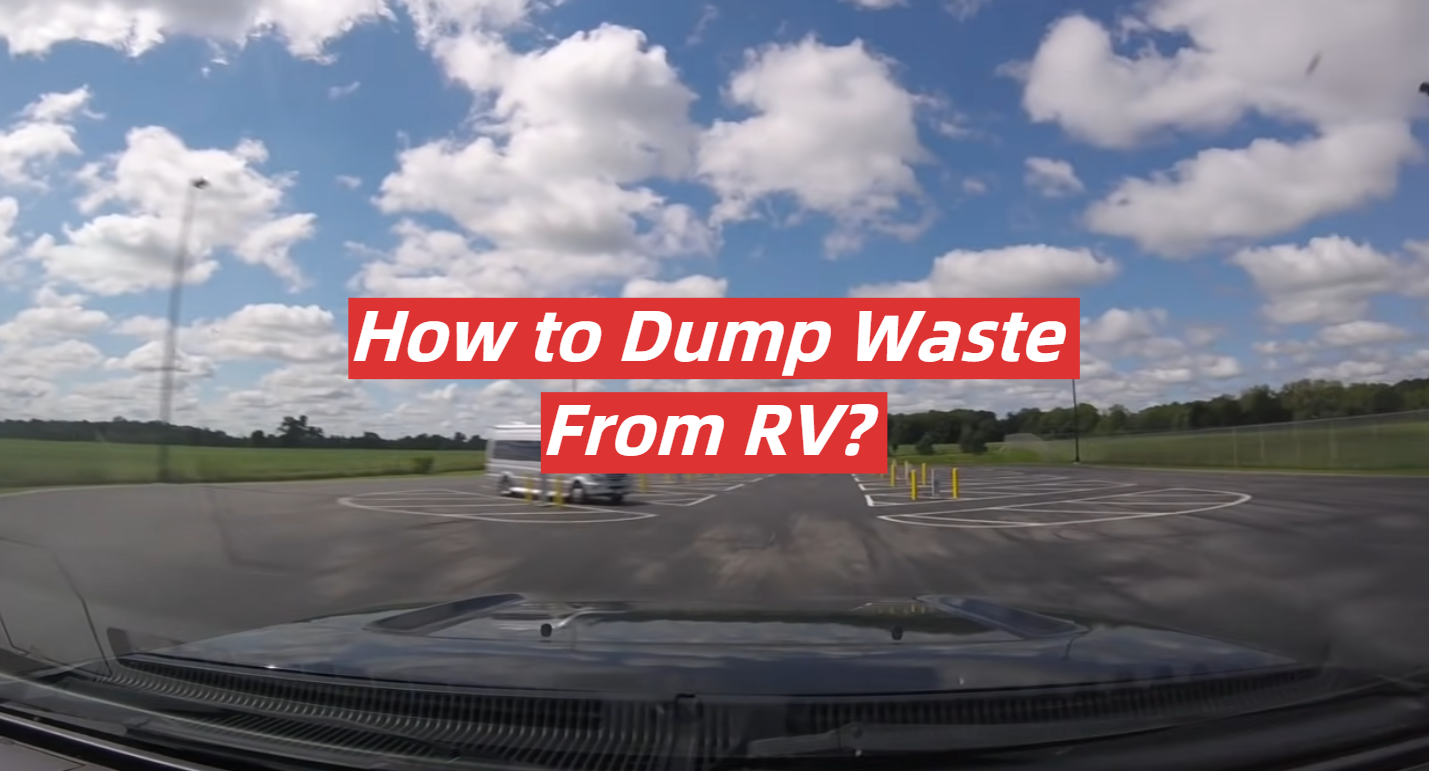
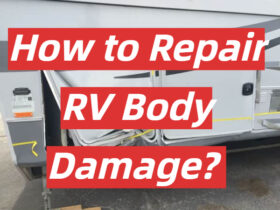
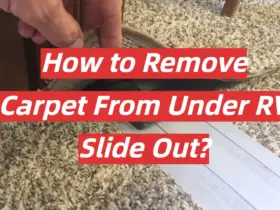
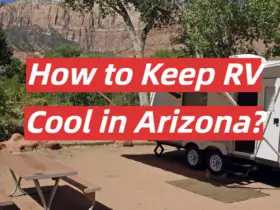
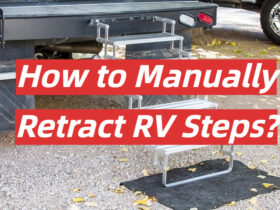
Leave a Reply